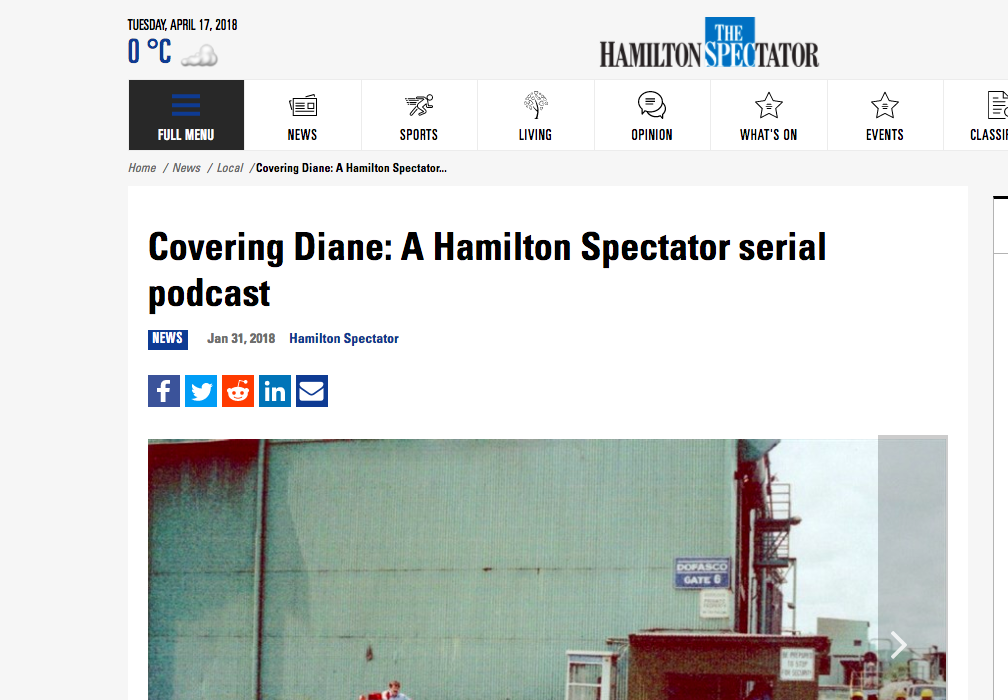A piece of Hamilton history and a true anomaly in the annals of Canadian crime reportage — the story Robert Badgerow, the first Canadian tried four times for the same murder — is now a podcast by the Hamilton Spectator.
In 1981, Diane Werendowicz, a 23 year old nursing assistant, was found dead in a ravine in Stoney Creek. The paper covered the case regularly thereafter. It was 17 years before a killer was identified. “That’s unprecedented,” said Jim Poling, the Spec’s managing editor (He has since left the Spectator to be editor in chief of the Waterloo Region Record). “We covered all four trials. It’s a very important case for our paper.”
With that in mind, the Spec launched a podcast, Covering Diane, to give readers a look behind the curtain.
The five-episode podcast is a project of columnist Susan Clairmont and former web editor David Crosbie (now a producer at Canadaland). The podcast’s five episodes feature new interviews and older archive material.These include interviews with the original reporter, Barbara Brown, clips of tips given to police, audio samples of the original interviews, rare archive photos and video.
“A lot of it was court evidence but we didn’t have the technology to share it,” Poling said. “Now we have the ability to give people one story and all the information in one place.”
Though subtitled “A Hamilton Spectator serial podcast,” Covering Diane isn’t a murder mystery podcast like Serial and others, Poling noted. “We didn’t promise any reveal,” he explained. “People know who the killer is. We didn’t have to build suspense and it’s not a finely polished production. This is a newsroom telling a story to the best of our ability. We don’t add drama.”
He said the producers were also conscious of avoiding a show that sounded like back-patting from veteran reporters.
Though the story is well-known in Hamilton, Poling says the response to the podcast has been surprising. “The response has been excellent. It’s global. People listen to this all over the world.” He said the podcasts is surprisingly popular in Chile, Japan and in Europe.
“The interesting thing with this podcast, part of it was we wanted to tell a story readers and listeners would be entertained and informed by. The other part of it was how can this newsroom tell a new story using creativity for professional development with very limited resources. This was an exercise in how can we do this to tell stories in a newspaper, website, social media,” Poling said.
Poling said the podcast has also changed the mood inside the newsroom, as newer reporters look back on the paper’s past efforts with pride and older reporters reflect on the newspaper’s past as well. “This is one more project that employees look at and see we’re doing interesting things. We have challenges and limited resources but this allows us to do something interesting.”

